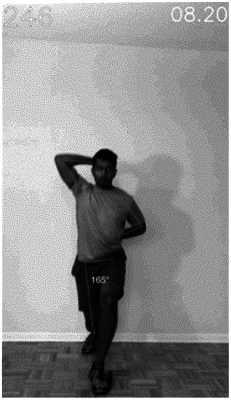| CPC G06T 7/0014 (2013.01) [A61B 5/0077 (2013.01); A61B 5/1128 (2013.01); A61B 5/486 (2013.01); A61B 5/7267 (2013.01); A61B 5/7275 (2013.01); G06N 5/04 (2013.01); G06N 20/00 (2019.01); G06T 7/75 (2017.01); G09B 19/00 (2013.01); G16H 20/30 (2018.01); G16H 50/20 (2018.01); G16H 50/30 (2018.01); A61B 2576/00 (2013.01); G06T 2200/24 (2013.01); G06T 2207/10016 (2013.01); G06T 2207/20081 (2013.01); G06T 2207/30008 (2013.01)] | 10 Claims |

|
1. A method of performing an assessment of biomechanics, the method comprising:
obtaining a plurality of images comprising visual data associated with a subject;
analyzing each of the plurality of images to detect a position for each of at least one anatomical feature;
wherein said analyzing each of the plurality of images comprises:
applying a machine learning model to identify the at least one anatomical feature in each of the plurality of images;
applying a statistical smoothing to an output of location data of the anatomical features;
using a predetermined size of a reference object to calculate a true size of pixels in a plane in which the biomechanics are occurring;
calculating a true distance of the at least one anatomical feature across the images using the troe size of the pixels; and
outputting one or more metrics indicating movement of the subject in the plurality of images,
wherein the one or more metrics comprise at least one of:
a first angle made by a tibia and at least one metatarsal bone of the subject; and
a second angle made at a knee joint of the subject, the second angle being calculated using a cosine rule, anchoring off a hip, a knee and an ankle of the subject.
|